
30-12-2025 16:44
Pascal DucosBonjour,Une anamorphe rose stipitée, très nombre

30-12-2025 17:14
 Bernard CLESSE
Bernard CLESSE
Bonjour à toutes et tous,Pourriez-vous aider Albe

29-12-2025 10:15
Hulda Caroline HolteHello, I found and collected this propoloid ascom

30-12-2025 09:04
Hello.A Pyrenomycete sprouting sparsely but very d

29-12-2025 17:44
Isabelle CharissouBonjour,J'aimerais savoir si d'autres personnes au

12-11-2021 00:03
Lepista ZacariasHi everybody,A week ago in my fiels trip I noticed

29-12-2025 17:12
 Bernard CLESSE
Bernard CLESSE
Bonjour à toutes et tous,Pourriez-vous m'aider à
Hysteriaceae from Panama
Esquivel-Rios Eduardo,
07-10-2012 20:58
I fond this Hysteriaceae in a dead trunk of Erytropleum guineense , may be a Rhystiohysteron, apothecium 3 - 4 mm. ascospores 22-30 x 7 - 9 microns, only found ascospores and in need help for indentification. Thanks.
Hans-Otto Baral,
07-10-2012 21:09

Re : Hysteriaceae from Panama
yes, it is Rhystidhysteron? rufulum
Zotto
Zotto
Alain GARDIENNET,
07-10-2012 22:00
Re : Hysteriaceae from Panama
Yes, it is !
To go further, read the paper :
Mycological research 113 (2009) 405-416
Alain
Andrew N. Miller,
08-10-2012 16:07

Re : Hysteriaceae from Panama
Yes, R. rufulum. I found this in eastern Brazil in 2010. Interesting geographical distribution assuming it is all one species.
Andy
Andy
Hans-Otto Baral,
08-10-2012 16:25

Re : Hysteriaceae from Panama
The paper by Murillo et al. 2009 presents 4 very clear clades within R. rufulum, which correspond to some differences in ascus and ascospore size (see below, ascus data probably from dead asci).
Regrettably, only two of them were figured, one of which being stated as neotype of R. rufulum. No names were given to the remaining three, though the molecular data strongly support different species, and I cannot see which clade represents the neotype.
If anybody has this paper as pdf (with word search option) I would be grateful, because it would then be easier to understand.
Zotto
Regrettably, only two of them were figured, one of which being stated as neotype of R. rufulum. No names were given to the remaining three, though the molecular data strongly support different species, and I cannot see which clade represents the neotype.
If anybody has this paper as pdf (with word search option) I would be grateful, because it would then be easier to understand.
Zotto
Alain GARDIENNET,
08-10-2012 17:54
Hans-Otto Baral,
08-10-2012 18:00

Re : Hysteriaceae from Panama
Thanks, Alain! If the words are properly found, the word neotype appears only once in the legend, not in the main text. Now I also understand that diferent hymenial colours are diagnostic.
Zotto
Zotto
Esquivel-Rios Eduardo,
08-10-2012 22:54
Re : Hysteriaceae from Panama
Dr.Eric W.A. Boehm, Hysteriaceae expert, confirm is R. rufulum,. A detailed description of this genus can be found in:
http://www.eboehm.com/id62.html
http://www.eboehm.com/id62.html
Hans-Otto Baral,
08-10-2012 22:59

Re : Hysteriaceae from Panama
Yes, but the article by Murillo suggests that different species hide behind H. rufulum, which are apparently undescribed.
For your specimen Clade III would fit with spore size and hymenial colour.
For your specimen Clade III would fit with spore size and hymenial colour.
Esquivel-Rios Eduardo,
09-10-2012 01:15
Re : Hysteriaceae from Panama
Both papers, Murillo et al and Boehm pubished in 2009. Murillo et al included this genera in Patellariaceae, but Bohem not agree. "Boehm et al. (2009) were the first to provide sequence data indicating that Rhytidhysteron does not lie within the Patellariaceae. Although initially based on only a single isolate of R. rufulum (CBS 306.38), the genus was tentatively noted to be associated with the Hysteriaceae. In the current study, a total of eight isolates, representing three species, clearly indicates that that the genus Rhytidhysteron belongs to the family Hysteriaceae, and not to the Patellariaceae, the latter defined in this study to include Hysteropatella clavispora (CBS 247.34), Hp. elliptica (CBS 935.97), and Patellaria atrata (CBS 958.97).
Esquivel-Rios Eduardo,
09-10-2012 01:22
Re : Hysteriaceae from Panama
About the Clades, i agree with you, this specimen belongs to Clade III of Murillo. But i think the clades are small mutations in color, metabolism, etc. not a taxonomic criteria or species level differentiation.
Hans-Otto Baral,
09-10-2012 07:44

Re : Hysteriaceae from Panama
I am not sure about that, I believe more in different species. The spore size differences are quite strong, and the genetic data seem to be convincing. These fungi should be studied in more detail, the pigments are apparently also chemically different. There are similar differences in Xylariaceae, for example.
Yes, the relation to the Hysteriales is obvious from this molecular study.
Zotto
Yes, the relation to the Hysteriales is obvious from this molecular study.
Zotto



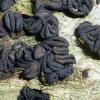
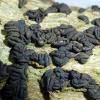
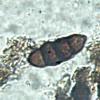
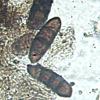
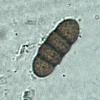

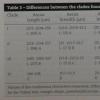
 Rhytidhysteron-rufulum-0001.pdf
Rhytidhysteron-rufulum-0001.pdf